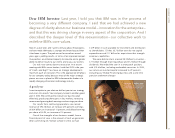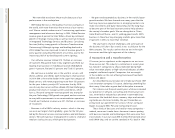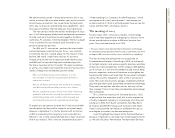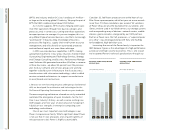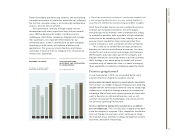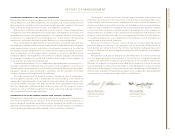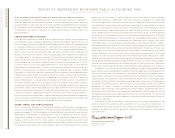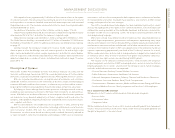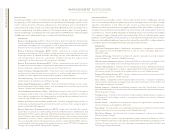IBM 2004 Annual Report Download - page 6
Download and view the complete annual report
Please find page 6 of the 2004 IBM annual report below. You can navigate through the pages in the report by either clicking on the pages listed below, or by using the keyword search tool below to find specific information within the annual report.
04
chairman’s letterchairman’s letter
(BPTS), and industry analyst IDC sizes it at about $1.4 trillion—
as large as the existing global IT industry. We peg the part of
BPTS that IBM is addressing at about $500 billion.
As its name suggests, BPTS involves helping clients opti-
mize their operations through new business designs and
processes, and, in some cases, turning over those operations
to expert partners to manage. As you can imagine, this is a
very different type of services business — one that is increasingly
“asset-based.” It requires deep knowledge of business
processes like logistics, supply chain and human resource
management, and relies heavily on automated processes
and intellectual capital, not mere labor arbitrage.
In 2004, we extended our capabilities in BPTS, making
substantial investments in four areas—Business Transformation
Outsourcing, Engineering and Technology Services, Strategy
and Change Consulting, and Business Performance Manage-
ment Software. We generated more than $3billion in revenue
in these four areas—up about 45 percent over the previous
year. And our software and services groups are working
together to build out an infrastructure that fuses business
transformation with information technology— what is called
services-oriented architecture— to support our evolution to
an asset-based services business.
2. Because we saw that computing was undergoing a fundamental
shift, we developed the architecture and technologies for the
On Demand Operating Environment, based on open standards.
The new computing architecture is based on a truly networked
world and the emergence of open standards— for the first
time in our industry’s history — as well as some exciting new
technologies and new ways of accessing and managing IT.
It builds on our strengths in enterprise computing, core
technology and software.
One of our most important core technologies is our
Power microprocessor family. What’s significant about Power
is not just that it’s fast and packs a lot of punch (plenty of
microprocessors do). Power is highly customizable.
Consider: 32,768 Power processors are at the heart of our
Blue Gene supercomputer, which last year set a new record—
more than 70 trillion calculations per second. Yet variations
of Power chips are also the foundation for our pSeries and
iSeries, and are used in our blade servers, our storage systems
and an expanding array of devices—network routers, mobile
devices, game consoles—designed by our OEM partners.
Built on a Power core, the Cell processor— a “supercomputer
on a chip”—was developed along with Sony and Toshiba
for broadband, high-definition uses.
Increasing the uses of the Power family is important for
IBM, because it gives us the advantages of a high-performance
processor and high-volume economics. This is one reason
we’ve opened Power’s technical specifications through our
0403
02
0100
. .
.
.
.
04
03020100
.
.
.
.
.
income from continuing
operations
revenue from continuing
operations
(IN BILLIONS OF DOLLARS)
(IN BILLIONS OF DOLLARS)



